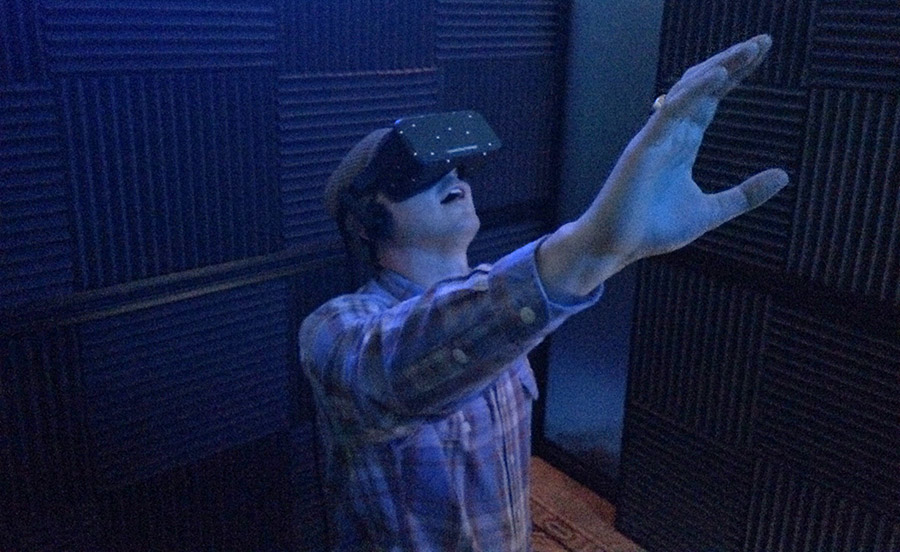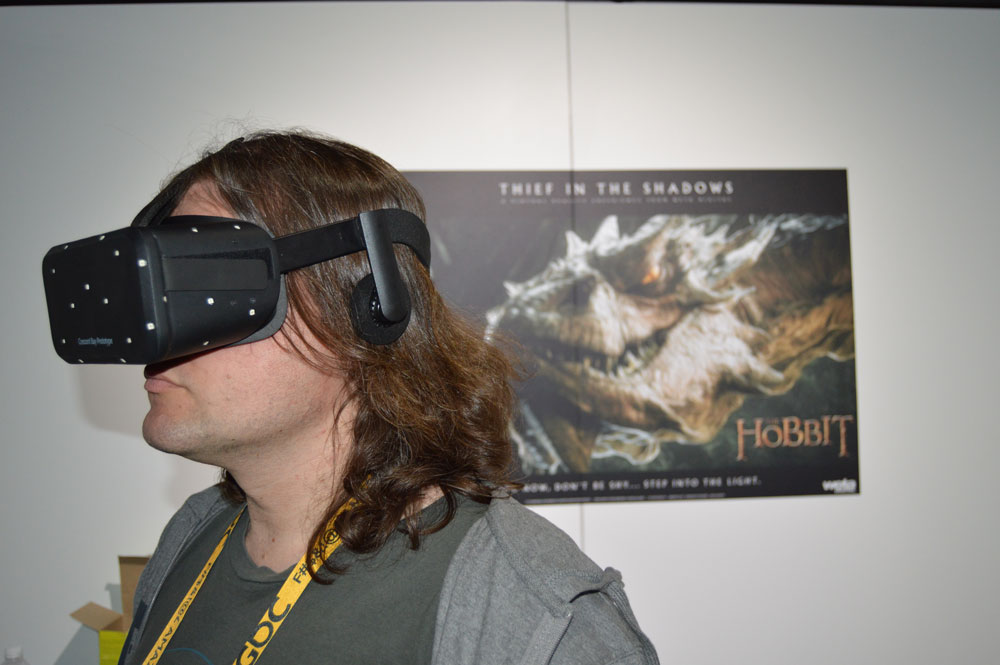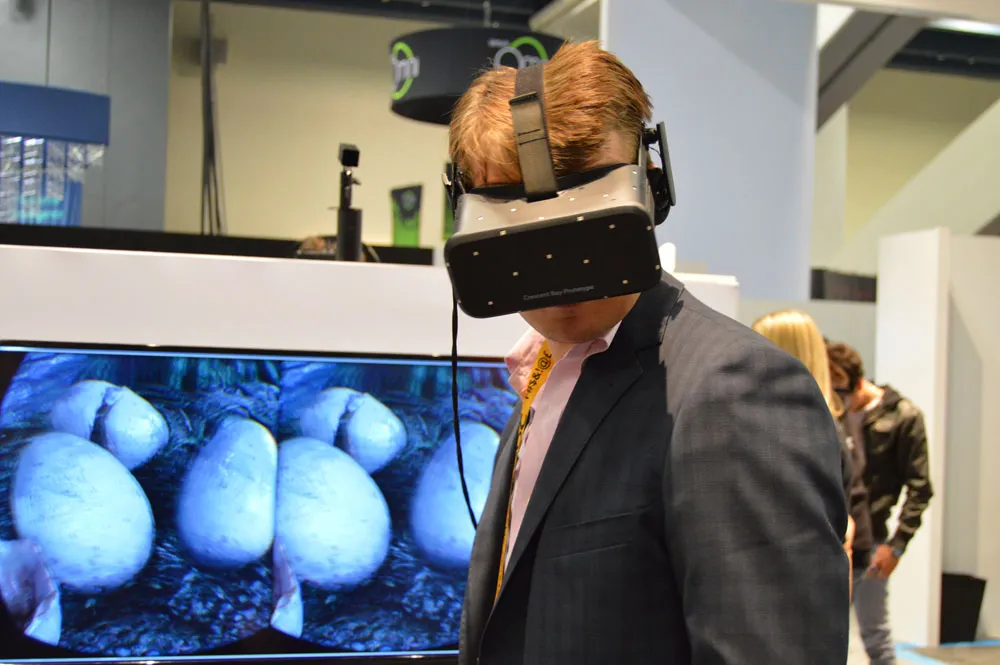While the Vive seems to have won the hype battle at GDC this year, Oculus has not been without their own tid bits. During John Carmack’s talk yesterday he said “barring something disastrous,” such as Samsung deciding they were done with VR, we would finally get to see the full consumer version of the GearVR with Samsung’s next product cycle, but Oculus’ flagship – their desktop HMD series, was not without its own news updates. For the first time ever, Oculus is showing the Crescent Bay off outside of its own controlled booth environment, and thats potentially significant.
Up until this point, we have only seen the Crescent Bay – the latest publicly displayed prototype – a few times, and each of those times it has been in a tightly controlled environment. At Oculus Connect, where the device was debuted, the demoers delicately placed the devices on the heads of the demoees, as they were all handmade. According to Brendan Iribe – Oculus’ CEO, one of those handmade prototypes actually broke in the hotel room before the Connect conference, to illustrate their delicacy.
Then the devices made a smaller appearance, and perhaps their closest visit ‘out in the wild,’ when they appeared at SVVR’s Christmas Party. At that event, Oculus set up a makeshift demo room where a long line of eager VR enthusiasts slowly made their way through the demo (Oculus only brought one device).

Then at CES Oculus again showed it’s prototype, this time showcasing the new 3D audio capabilities that were enabled through a partnership with Visisonics to bring their RealSpace 3D audio technology to the Rift (Oculus released a preview of that SDK yesterday actually). The newly lengthened demo reel showcased that 3D audio in action with a number of fun demos (the robots fighting with wands was among my favorites). The booths were all soundproofed and darkly lit, as they encapsulated demoees in small private rooms (similar to how they had run the demos before, but with more production value). The demos were also carefully orchestrated, as the devices were still very delicate, with the demoers handling them. Sundance followed a few weeks later with the utterly surprising announcement of Oculus Story Studio. This may have been the most private large scale demos they had run yet, with only about 150 people, at the very most in attendance (including Adrian Grenier of Entourage fame), but even in this more controlled setting, the demoers handled the devices.
But at GDC Oculus has shifted its approach, not only bringing the Crescent Bay out of the room and on to the floor, they let it escape the boundaries of their booth as well. Walking the show floor at GDC it was hard not to spot the silver checked, sleeker looking chassis of the Crescent Bay. Crytek placed a pair of them by the walkway in their booth completely out in the open, showing off an extremely impressive demo called “Back to Dinosaur Island.” Unity showed off the device out in the open as well right across the way, showing off some really cool Unity 5 stuff. Unreal and NVIDIA had Crescent Bays as well, although they each went with the more traditional quiet room approach (which at a conference as busy as GDC isn’t necessarily the wrong move), presumably to ensure the fidelity of the audio during the stunning Thief in the Shadows experience that was done with The Hobbit‘s special effects team, Weta.

Beyond seeing the device outside of Oculus’ own booth, it was also interesting to see it outside of Oculus’ own people. At only one of the demos (Crytek) did I spot an official, eyeball shirt wearing Oculus demoer. Furthermore, at each booth the demoer offered to let me put on the device myself including doing all the adjustments. All of these signs point to an increased level of confidence on Oculus’ part in the device, including its sturdiness. Allowing the tracking to be used on the show floor also was pretty big as it showed confidence in it’s ability to perform in a busy environment. And perform well it did, but not flawlessly as I did have a moment of two of slight error in the tracking during my Crytek demo as there was a large number of people mulling around at the time.
This should be taken as an encouraging sign of confidence in the device. While GDC did not come with a CV1 release date, it seems to have come with a vote of confidence in the fidelity of the current prototype, which is encouraging as we move forward. Oculus probably won’t release a date for a consumer device until they have a more sturdy grasp of what the input solution is going to be for them, and based on reports from people who have tried Vive, they shouldn’t. As Alex Schwartz of Owlchemy labs, one of the initial partners of the HTC/Valve project, put it to me “once you’ve experienced that input, it’s impossible to go back.” It will be interesting to see if we start spotting the Crescent Bay in the wild more, but this dalliance into the wild is a signal of what is to come.

























